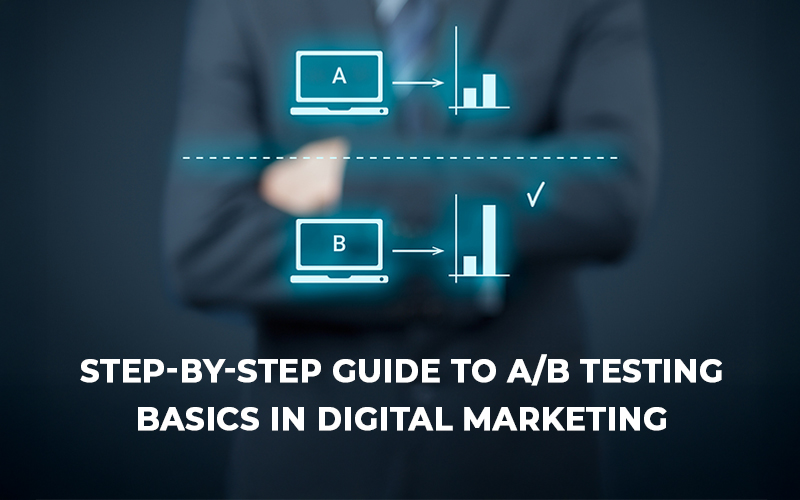Welcome to Scrum Digital’s comprehensive beginner’s guide to A/B testing in digital marketing, your starting point for turning guesswork into data-driven results. Whether you’re completely new to the concept of split testing or just looking to sharpen your strategy with a refresher, this guide will walk you through the entire process, from choosing the right tools to uncovering quick wins that boost performance.
You might be wondering, “What makes split testing so important?” Its force and simplicity hold the answer. By making small, strategic changes, like adjusting a headline, modifying a CTA button, or altering page layout, you can unlock significant improvements in conversion rate optimization, user engagement, and ultimately, your return on investment.
In today’s fast-paced digital marketing environment, understanding what truly resonates with your audience is essential. That’s exactly what this testing helps you do. So if you’re ready to make smarter marketing decisions and build better-performing campaigns, let’s get started!
What Is A/B Testing?
A/B testing, sometimes referred to as split testing, is a straightforward but effective technique for contrasting two digital asset versions: Version A, which serves as the control, and Version B, which acts as the variant, to ascertain which one, based on actual user interactions, performs better. This could involve testing anything from an email subject line or website headline to a landing page layout, CTA button color, or even the structure of an entire webpage.
Isolating a single variable at a time allows marketers and designers to identify what truly resonates with their audience, removing guesswork and relying instead on measurable, data-driven outcomes.
- The goal? Discover what drives a high conversion rate, improves user engagement metrics, and boosts click-through rate.
- With insights from customer journey mapping and consumer behavior trends, your tests become smarter and more strategic.
At Scrum Digital, we specialize in helping companies plan, implement, and learn from these tests, using top-tier testing software to deliver real results.
Why A/B Testing Matters in Digital Marketing

- Data-Powered Clarity: Stop guessing and start knowing. Split testing empowers you to make data-driven decisions by comparing real user behavior.
- Higher Conversions: Even minor UI tweaks, like changing a CTA from “Submit” to “Get Started,” can unlock major gains in conversion rates.
- Better ROI: Your ROI might increase dramatically with even a slight increase in your conversion rate. Especially when investing in landing pages, the payoff can be huge.
- Improved UX: Through user experience testing, you tailor content and design to what your audience wants, sometimes in surprising ways.
- Staying Ahead: Monitoring customer behavior patterns keeps you proactive, helping you outpace competitors who are still guessing.
Key Concepts: A/B Testing vs. Multivariate Testing
- A/B Testing: Only two versions are compared in A/B testing (control vs. variation).
- Multivariate testing involves experimenting with several elements at once, such as headlines, images, and buttons, to identify the most effective combination.
Multivariate tests require more traffic and analytics rigor, but deliver deeper insight. At Scrum Digital, we provide guidance on when to transition from basic split testing to more intricate studies.
Step-by-Step Split Testing Process

- Set Smart Goals: Define what you’re optimizing. Common objectives include boosting:
- Click-through rate
- Conversion rate optimization on form fills or downloads
- Deeper measurements of user involvement (scroll depth, duration on page)
Starting with clear KPIs helps you measure success and showcase improvements.
2. Pick A/B Testing Software: Your choice of software shapes the testing experience. Industry favorites include
- Optimizely
- VWO
- Google Optimize
- Adobe Target
Essential features to look for:
- Visual WYSIWYG editor
- Tracking goals
- Built-in a/b test significance calculator
- Compatibility with Multiple-variable testing
At Scrum Digital, we help you find the right platform that aligns with your goals and budget.
3. Build a Clear Hypothesis: Every test starts with a hypothesis:
“If we change the CTA button to bright orange, our CTR will rise by 8–10%.”
Hypotheses based on journey mapping and customer behavior patterns are stronger and more likely to move the needle.
4. Create Test Variations: Design at least one alternative version. Examples:
- Split testing for landing pages: test headline copy, hero image, form length, layout.
- CTA button color or wording, Simplified checkout flow, or fewer form fields.
5. Split Your Audience: Visitors can be randomly assigned to version A or version B using your program. Ensure even distribution and demographic parity to keep results unbiased.
6. Define Your Sample Size: To reach meaningful conclusions, calculate how much traffic you need using a significance calculator. Avoid stopping early, or you risk false positives.
7. Launch the Test: Once set up, start the experiment! Carefully watch metrics to spot emerging trends, but don’t prematurely halt the test.
8. Analyze Results: After reaching your sample size and statistical significance, compare key metrics:
- Improvement in CTR, increase in split testing conversion rate
- Higher overall CRO
If Version B wins, implement it. If results are inconclusive, consider further testing or multivariate experiments.
Best Practices for Effective Testing
- Start small and refine over time: Test individual elements before building complexity.
- Consistently map your customer journey: Tests should align with actual user paths, from awareness to conversion.
- Let the test run long enough: Statistical validity matters. Don’t stop when results look favorable.
- Document each experiment: Track hypotheses, setup, duration, tools, and results to enhance team knowledge.
- Avoid overlapping tests: Running multiple A/B tests on the same traffic segment can dilute results.
Real-World A/B Testing Examples
- CTA Button Color: A headline insurer boosted its CTR by 12% when switching from blue to yellow.
- Landing Page Layout: A SaaS business doubled its CRO by reorganizing features above the fold.
- Form Length: An e-commerce site increased sign-ups by 23% after reducing the number of form fields from eight to three.
- Email Subject Lines: Slight wording tweaks improved user metrics, including open rate and click activity.
Advanced Strategy: Multivariate Testing

Once you’ve mastered simple A/B testing, it’s time to take optimization to the next level with multivariate testing. This method allows you to test multiple element combinations, like headline + CTA color + image, simultaneously to see which mix delivers the best performance.
Because it analyzes several variables at once, Multiple-variable testing requires more traffic and the use of a reliable test significance calculator to ensure accurate results. It goes beyond measuring single changes, offering deeper insights into how page elements work together to influence user behavior.
At Scrum Digital, we typically begin with split testing to identify quick wins, then evolve into multivariate strategies to fine-tune the entire user experience with greater precision.
Competitor Approaches
- Competitor Alpha highlights design-first testing, but lacks ROI measurement rigor.
- Competitor Beta focuses heavily on multivariate complexity, sometimes missing UX fundamentals.
- Competitor Gamma offers statistical depth but isn’t rooted in the customer journey.
In contrast, Scrum Digital blends testing, sharp UX design, and solid analytics. We build robust test strategies that align with real-world user behavior and revenue goals.
Tracking ROI: Why It Matters

Before launching tests, ensure you can measure ROI:
- Multiply conversion lift by average order value to estimate the impact on revenue:
Determine how much extra revenue your test can generate by multiplying the percentage increase in conversions by the average order value. This helps translate performance improvements into real financial terms. - Subtract software and implementation cost:
Deduct all expenses involved in running the test, including software fees and any design or development resources. You can see your net gains more clearly as a result. - Divide the result by the cost to calculate ROI (works best when you aim for at least 3x–5x return).
Calculate ROI by dividing the net revenue increase by the total cost invested in testing. Aim for at least a 3x to 5x return to ensure your efforts are truly profitable.
At Scrum Digital, helping clients achieve strong ROI through smart CRO is what we do best.
Tools You’ll Need
| Tool Type | Purpose |
|---|---|
| A/B testing software | Build and run experiments |
| A/B test significance calculator | Ensure results are statistically sound |
| User analytics platforms | Monitor user metrics and track visitor flows |
| Customer journey mapping tools | Understand how users progress through your funnel |
| Heatmaps & session recordings | From UX testing, to spot friction or drop-off points |
Ready to Optimize with Scrum Digital?
At Scrum Digital, we combine strategic journey mapping, top-tier software, and expert UX testing to help you achieve reliable CRO. Whether you’re starting with split testing or ready to scale with Multiple-variable testing, we’re here to support your growth.
Take your first step today: Contact Scrum Digital to begin your A/B testing journey. Let’s boost your Increased conversions, enhance UX, and maximize ROI together.
Frequently Asked Questions
What is the significance of A/B testing?
A/B testing compares two versions of a digital asset to see which performs better, helping you make data-driven decisions that improve conversions and ROI.
How do I choose the right A/B testing software?
Look for tools with visual editors, goal tracking, and significance calculators. Google Optimize, VWO, and Optimizely are well-liked choices.
How long should I run an A/B test?
Run tests until you reach statistical significance to avoid inaccurate results. Use calculators to determine the right duration.
What distinguishes multivariate testing from A/B testing?
A/B tests one element at a time; multivariate tests multiple elements together for deeper insights, but need more traffic.



